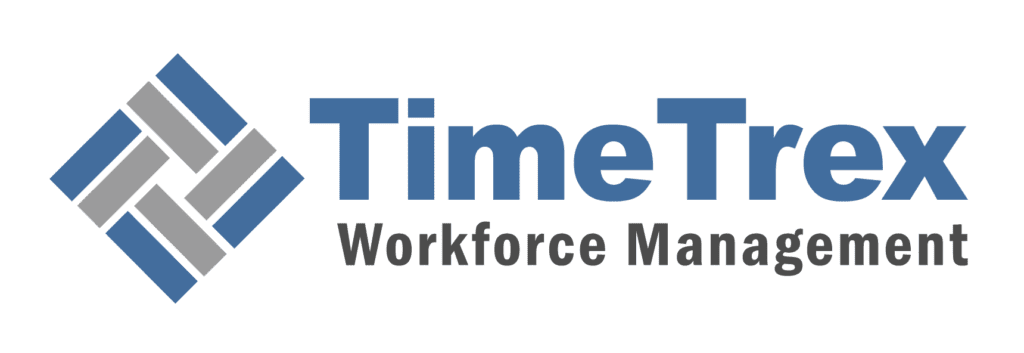TSX Live Clock
Toronto Stock Exchange
Loading...
Checking Status
Market Hours: 9:30 AM - 4:00 PM ET
Time Until Close
Found our Free TSX Live Clock useful? Bookmark and share it.

TL;DR
The Toronto Stock Exchange (TSX) is Canada's main stock market and a global leader for listing mining and energy companies. Operated by the TMX Group, it features a unique two-tiered system with the senior TSX for established companies and the TSX Venture Exchange (TSXV) for emerging businesses. The market's health is measured by the S&P/TSX Composite Index, which is heavily weighted in financials and natural resources. The TSX is a fully electronic exchange with a robust regulatory framework overseen by provincial bodies and the Canadian Investment Regulatory Organization (CIRO). While it competes with the NYSE and NASDAQ, it offers a cost-effective and strategic listing alternative, especially for resource and mid-cap companies. The exchange is currently focusing on growth in data services and sustainable finance to navigate future economic and technological trends.
The Toronto Stock Exchange: An In-Depth Analysis of a Global Resources and Financials Hub
Introduction
The Toronto Stock Exchange (TSX) stands as the cornerstone of Canada's capital markets, a senior equity marketplace that is integral to the nation's economic fabric and a significant player on the global financial stage. Operated by the TMX Group, the TSX has evolved from a nascent association of brokers into a technologically sophisticated, fully electronic exchange that serves as a primary gateway to one of the world's largest capital pools in North America. It is globally recognized for its preeminence in the natural resources sector, holding the distinction of being the world's foremost exchange for mining and oil and gas companies. This specialization, combined with a deep concentration of major financial institutions, gives the exchange a unique character that mirrors the strengths of the Canadian economy.
The performance of the TSX is captured by its benchmark, the S&P/TSX Composite Index, a capitalization-weighted measure of the largest and most prominent companies listed, which serves as a vital barometer for the health of the Canadian economy. From its formal establishment in 1861, the exchange has been marked by a history of resilience, strategic consolidation, and technological pioneering, including the launch of the world's first Computer Assisted Trading System (CATS™) in 1977.
This report provides a comprehensive, data-driven analysis of the Toronto Stock Exchange, designed for institutional investors, corporate issuers, and market participants who require a deep and nuanced understanding of its operations and strategic position. The analysis will traverse the exchange's history, dissect the corporate architecture of its parent, the TMX Group, and provide a granular examination of its benchmark index. It will detail the exchange's sophisticated trading mechanisms, its distinct two-tiered listing environment, and the multi-layered regulatory framework that ensures market integrity. Furthermore, the report will place the TSX in a competitive context against its North American peers and conclude with a forward-looking assessment of its trajectory, considering prevailing economic conditions, the transformative impact of technology, and the growing imperative of Environmental, Social, and Governance (ESG) principles. The objective is to deliver a holistic and insightful perspective on one of the world's most important capital markets.
The Genesis and Evolution of a National Institution
The Toronto Stock Exchange's journey from a small, localized group of businessmen to a global financial powerhouse is a narrative of strategic adaptation, technological innovation, and consolidation. Its history is deeply intertwined with the development of the Canadian economy itself, particularly the nation's vast natural resource wealth. Key milestones have shaped its identity, establishing it as a leader in specific sectors and a pioneer in market technology.
Humble Beginnings (1852-1913)
The conceptual origins of the Toronto Stock Exchange predate its formal incorporation, beginning on October 24, 1852, when a collective of Toronto businessmen established an "Association of Brokers". This association laid the foundational framework for what would become Canada's premier equity market. The formal creation of the Toronto Stock Exchange occurred in 1861, when a resolution was passed by 24 founding members.
In its nascent years, the exchange's operations were modest. Trading was limited to brief, half-hour sessions each day, with transaction volumes often amounting to just two or three trades daily. The initial cost of a membership, or "seat," on the exchange was a mere $5.00, and the trading list comprised only 18 securities. However, as Toronto grew as a commercial center, so did its exchange. By 1871, the number of member firms had grown to 14, and the price of a seat had increased to $250.
A significant step in its formalization came in 1878, when the Toronto Stock Exchange was officially incorporated through an Act of the Ontario Legislature. This legislative recognition provided a new level of legitimacy and structure. By the turn of the century, the exchange's growth was palpable. In 1901, the price of a membership seat had soared to $12,000, trading volume was approaching one million shares annually, and the number of listed companies had reached 100. This period of expansion also saw the introduction of continuous auction trading and the exchange's relocation into its own dedicated building on Bay Street, cementing its position in the heart of what would become Canada's undisputed financial district.
The Mining Powerhouse and Technological Pioneer (1914-1980s)
The 20th century saw the TSX navigate global crises and undertake strategic moves that would define its character for decades to come. Demonstrating its increasing integration with the international financial system, the exchange ceased operations for three months at the outbreak of World War I on July 28, 1914, a measure taken in concert with other major exchanges like the New York Stock Exchange (NYSE) to prevent financial panic.
The most defining event of this era, and arguably in the exchange's entire history, was the 1934 merger with its primary competitor, the Standard Stock and Mining Exchange. This strategic consolidation was transformative. It instantly made the newly unified Toronto Stock Exchange the largest and most important marketplace for mining securities in the world. This single decision established a deep-seated specialization that continues to be a core pillar of the exchange's global identity. Just two years later, in 1936, the TSX became the third-largest stock exchange in North America by volume.
The legacy of this 1934 merger cannot be overstated; it created a powerful and self-reinforcing ecosystem. The concentration of mining listings attracted a deep and specialized pool of capital from investors who understood the industry's unique risks and cycles. This, in turn, drew specialized analysts, geologists, and investment bankers, creating a hub of expertise. This network effect made the TSX the natural and most efficient place for subsequent generations of resource companies, including the burgeoning oil and gas sector, to raise capital. The exchange's dominance in the resource sector today, with approximately 40% of the world's public mining companies listed on the TSX and its junior counterpart, the TSX Venture Exchange (TSXV), as of late 2022, is a direct result of this foundational strategic move nearly a century ago. For global investors, this history means the TSX offers unparalleled access and liquidity in the resource space; for issuers, it provides a market with a sophisticated, long-standing understanding of their business.
The exchange also proved its resilience during the Great Depression. While over 2,000 investment and brokerage firms failed in the United States following the 1929 crash, no member of the Toronto Stock Exchange defaulted on their obligations to clients, a testament to the stability of the Canadian financial system.
This era was also marked by a profound commitment to technological advancement. In a landmark move in 1977, the TSX launched the world's first Computer Assisted Trading System, known as CATS™. This innovation, which provided electronic access to trading well before many other global exchanges had abandoned their physical floors, positioned the TSX as a technological leader and set a precedent for future innovation. In the same year, the exchange introduced the TSE 300 Composite Index, a modern and comprehensive benchmark for the Canadian market. By 1980, the TSX's dominance within Canada was clear, as it handled 80% of all equity trading in the country.
Modernization and Demutualization (1990s-Present)
The late 20th and early 21st centuries were characterized by rapid modernization, structural transformation, and further innovation. In 1990, the TSX once again broke new ground with the creation of the Toronto 35 Index Participation Fund (TIPs), the world's first exchange-traded fund (ETF). This pioneering product category would go on to revolutionize the investment management industry globally.
The exchange continued its technological march, becoming the first in North America to introduce decimal trading in 1996, a move that narrowed spreads and benefited investors. A year later, in 1997, the TSX closed its physical trading floor, completing its transition to a fully electronic, or "virtual," trading environment.
The most significant structural shift of this period occurred on April 3, 2000, when the Toronto Stock Exchange completed its demutualization. This process transformed the exchange from a not-for-profit entity owned by its member firms into a for-profit company, The Toronto Stock Exchange Inc.. This was a critical and necessary evolution, aligning its corporate structure with those of its publicly traded issuers and paving the way for its own initial public offering and the subsequent formation of the TMX Group.
Finally, to better reflect the modern market, the long-standing TSE 300 Composite Index was replaced by the S&P/TSX Composite Index on May 1, 2002. This move aligned Canada's benchmark with a global standard of index construction and governance, further integrating the TSX into the international investment landscape.
The TMX Group: Corporate Architecture and Strategic Vision
The Toronto Stock Exchange does not operate in isolation. It is the flagship entity within a larger, publicly traded, and highly integrated financial services company: the TMX Group. Understanding the structure and strategy of the parent company is essential to grasping the full context of the TSX's operations, its competitive positioning, and its future direction.
Formation and Corporate Identity
The modern TMX Group (traded on the TSX under the symbol: X) was officially formed on May 1, 2008, following the acquisition of the Montréal Exchange (MX) by the then-named TSX Group Inc.. This pivotal transaction brought Canada's premier marketplace for senior equities (TSX) and its primary hub for derivatives trading (MX) under a single corporate umbrella, creating a powerful, multi-asset class exchange group. The company is headquartered in Toronto and operates as a for-profit enterprise. As of its 2022 fiscal year, TMX Group reported revenues of $1.1 billion, total assets of nearly $56 billion, and employed over 1,600 people.
The company's strategic direction is guided by a clear set of principles. Its stated purpose is to "make markets better & empower bold ideas," with a mission to "power capital and commodity markets with client-centric, technology-driven global solutions." Its vision is to be an indispensable solution for companies raising capital and the preferred destination for investors and traders.
A Diversified Portfolio of Market Infrastructure
The TMX Group's strength lies in its vertically integrated business model, which encompasses the entire lifecycle of a financial transaction, from listing and trading to clearing, settlement, and data dissemination. This structure provides multiple revenue streams and creates a comprehensive ecosystem for market participants. Its key subsidiaries and business lines include:
- Equity Markets:
- Toronto Stock Exchange (TSX): The senior market for established domestic and international companies, known for its stringent listing standards.
- TSX Venture Exchange (TSXV): A unique public venture capital marketplace for emerging, early-stage companies.
- TSX Alpha Exchange: An alternative trading venue that provides a different trading model and fee structure.
- Derivatives Market:
- Montréal Exchange (MX): Canada's center for derivatives trading.
- Clearing, Settlement, and Depository Services:
- The Canadian Depository for Securities (CDS): Canada's national securities depository for clearing and settling trades.
- Canadian Derivatives Clearing Corporation (CDCC): The central clearing counterparty for exchange-traded derivative products.
- Data, Analytics, and Technology Services:
- TMX Datalinx: Provides real-time and historical market data and analytics.
- Trayport: A leading provider of energy trading software with a global footprint.
- VettaFi: A U.S.-based indexing, analytics, and digital distribution firm.
- Other Services:
- TSX Trust: Provides transfer agency, corporate trust, and other issuer services.
- Shorcan Brokers: An inter-dealer bond broker.
Strategic Imperatives and Growth Vectors
TMX Group's corporate strategy is focused on several key areas designed to ensure its long-term growth and competitiveness. These include an emphasis on accelerating growth in high-potential areas, advocating for more efficient markets, and establishing a leadership position in sustainable finance.
A central element of the company's strategy is a discernible pivot from relying solely on traditional, transaction-based exchange revenues towards building more stable, recurring revenue streams from data and ancillary services. The acquisitions of Trayport and VettaFi are clear evidence of this strategic shift. This evolution from a pure marketplace operator to a diversified financial technology and data provider mirrors a global trend among exchange groups. By leveraging their core asset—market data—exchanges are building more resilient, higher-margin businesses that are less susceptible to the cyclicality of trading volumes. This strategy not only strengthens the parent company's financial profile but also positions it to capitalize on the explosive demand for high-quality, structured data in an era increasingly dominated by AI-driven trading and quantitative analysis.
Furthermore, TMX Group has embraced a leadership role in Environmental, Social, and Governance (ESG) investing. The company actively engages with regulators to enhance the competitiveness of Canadian markets while promoting ESG principles. This commitment is demonstrated through tangible initiatives, such as the launch of a voluntary climate marketplace for carbon offsets and a strategic focus on attracting issuers of minerals and metals essential for the low-carbon economy.
The S&P/TSX Composite Index: A Barometer for the Canadian Economy
At the heart of the Toronto Stock Exchange's public identity is its main benchmark, the S&P/TSX Composite Index. This index is the definitive measure of the Canadian equity market's performance, serving as a critical tool for investors, fund managers, and economic analysts alike. Its composition and methodology reflect the unique structure of the Canadian economy.
Index Overview and Significance
The S&P/TSX Composite Index is widely regarded as Canada's headline equity index, analogous in its function and prominence to the S&P 500 in the United States. Calculated and managed by S&P Dow Jones Indices, it is designed to provide a broad, representative, and investable measure of the Canadian market. The index includes the largest and most liquid companies listed on the TSX, capturing approximately 70% to 80% of the exchange's total float-adjusted market capitalization. As of early 2024, it comprised roughly 225 constituents with a total market capitalization exceeding C$3.3 trillion.
The index serves three crucial functions in the financial ecosystem:
- Economic Barometer: It provides a real-time, easily understood snapshot of the performance and sentiment of Canada's largest public companies.
- Performance Benchmark: It is the primary standard against which Canadian active equity fund managers measure their performance.
- Basis for Investment Products: It provides the foundational structure for a wide range of passive investment vehicles, including index mutual funds and numerous ETFs.
Methodology and Eligibility Criteria
The S&P/TSX Composite Index is constructed and maintained according to a rigorous and transparent set of rules to ensure it remains representative and liquid.
- Weighting Method: The index is a capitalization-weighted index, meaning larger companies have a greater impact on its movement.
- Domicile: Companies must qualify as Canadian, generally requiring incorporation, primary listing, and a substantial presence in Canada.
- Market Capitalization: A security must represent at least 0.05% of the index's total float-adjusted market capitalization for inclusion.
- Liquidity: A new company must have a float turnover ratio of at least 0.50 over the past 12 months.
- Share Price: A security must have a volume-weighted average price of at least C$1.00 over the three months prior to review.
- Ineligible Securities: Certain securities like preferred shares and warrants are excluded.
Sector Composition and Key Constituents
The sector breakdown of the S&P/TSX Composite Index is a direct reflection of the industrial structure of the Canadian economy, with a notable concentration in a few key areas.
Sector Dominance: The index is heavily weighted towards the Financials, Energy, and Materials sectors. As of January 2024, the Financials sector accounted for approximately one-third of the entire index. This concentration has been a long-standing feature, though its magnitude has fluctuated with economic cycles.
Top Constituents: The largest companies in the index are household names in Canadian business. The top 10 constituents consistently feature Canada's "Big Five" banks, major energy pipeline companies, and other globally significant corporations. As of mid-2024, this list included firms such as Royal Bank of Canada (RY), Shopify Inc. (SHOP), The Toronto-Dominion Bank (TD), Enbridge Inc. (ENB), and Brookfield Corporation (BN). The top 10 constituents alone account for a substantial portion of the index's total market value.
This heavy concentration in financials and resources is a double-edged sword. On one hand, it makes the index an excellent proxy for the major themes driving the Canadian economy. On the other hand, this concentration makes the index inherently more volatile and less diversified than broader global indices. Investors must therefore recognize that an investment in a broad S&P/TSX Composite index fund is an implicit, leveraged bet on Canadian financials and global commodity trends.
Index Family and Maintenance
The S&P/TSX Composite Index is the parent to a broader family of indices that allow investors to target specific segments of the Canadian market, including the S&P/TSX 60 Index and various sector-specific indices. To ensure accuracy, the index undergoes a formal review and rebalancing process on a quarterly basis, effective after the close of trading on the third Friday of March, June, September, and December.
The Engine Room: Trading Mechanisms and Market Operations
The Toronto Stock Exchange operates as a fully electronic marketplace, underpinned by a sophisticated technological infrastructure designed to ensure fairness, transparency, and efficiency. The structure of its trading day is meticulously organized into distinct sessions.
The Trading Day: A Session-by-Session Breakdown
The standard trading day for both the TSX and TSXV runs from 9:30 AM to 4:00 PM Eastern Time (ET), Monday to Friday, without a lunch break.
- Pre-Open Session (7:00 AM – 9:30 AM ET): Allows for order entry and cancellation before the market opens. A Calculated Opening Price (COP) provides transparency.
- Market Open (9:30 AM ET): A single-price opening auction (Market on Open, MOO) matches all eligible orders to establish the opening price.
- Continuous Trading Session (9:30 AM – 4:00 PM ET): The core session where orders are matched continuously on a central limit order book based on price-time priority.
- Market on Close (MOC) Facility (3:50 PM – 4:00 PM ET): A sophisticated, multi-stage auction to determine the official closing price, critical for funds and investors.
- Post-Market Sessions (4:00 PM – 5:00 PM ET): Includes sessions for final activities, potential price extensions, and extended trading at the last sale price.
The highly structured nature of the opening and closing auctions is a defining feature of modern exchanges. The rise of passive investing has concentrated enormous trading volume at the start and end of the day. These sophisticated auctions are engineered to absorb this massive order flow in a fair and orderly manner, preventing excessive volatility and ensuring operational integrity.
The Broader TMX Trading Ecosystem
The TMX Group operates a suite of trading venues with different hours. The TSX Alpha Exchange offers a longer continuous trading session (8:00 AM to 5:00 PM ET). The Montréal Exchange, as the derivatives center, operates on distinct schedules, including overnight sessions for key contracts to align with global market hours.
The Path to Public Markets: A Comparative Analysis of TSX and TSXV Listing Requirements
TMX Group offers a unique two-tiered equity market structure, providing distinct pathways for companies at different stages of growth.
The Two-Tiered Equity Ecosystem
- TSX Venture Exchange (TSXV): A public venture capital marketplace for emerging, early-stage companies needing capital to grow.
- Toronto Stock Exchange (TSX): The senior market for established companies with a solid track record and larger financial footprint.
A key feature is the "graduation" process, where a maturing TSXV company can move its listing to the senior TSX, signaling stability and unlocking access to a larger pool of capital.
TSX (Senior Market) Listing Requirements
The TSX maintains rigorous listing standards customized by industry. General financial thresholds vary for profitable companies versus those in development stages. Specialized categories exist for technology, R&D, mining, and oil & gas companies, each with specific requirements. All applicants must demonstrate broad public distribution, typically requiring at least 1,000,000 freely tradable shares held by 300+ public shareholders, with a minimum aggregate market value.
TSXV (Venture Market) Listing Requirements
The TSXV's requirements are more accessible for smaller companies and are divided into two tiers (Tier 1 for more advanced juniors, Tier 2 for earlier-stage companies). Financial hurdles are significantly lower than for the TSX, and public distribution requirements are less stringent.
| Requirement | TSX (Non-Exempt Technology) | TSXV (Tier 1 Industrial/Tech) | TSXV (Tier 2 Industrial/Tech) |
|---|---|---|---|
| Net Tangible Assets | Not the primary test; focuses on treasury and market value. | C$5,000,000 | C$750,000 |
| Revenue/Earnings | Not required if other tests met; path for profitable companies exists. | C$5,000,000 in revenue OR history of operations with 2-year business plan. | C$500,000 in revenue OR history of operations with 2-year business plan. |
| Working Capital | Funds for at least 12 months of expenses. | Funds for at least 18 months + C$200,000 unallocated. | Funds for at least 12 months + C$100,000 unallocated. |
| Total Market Value | Minimum C$50,000,000 for all listed securities. | Not explicitly required, implied by financing and float value. | Not explicitly required, implied by financing and float value. |
| Public Float (Shares) | 1,000,000 | 1,000,000 | 500,000 |
| Public Float (Market Value) | C$10,000,000 | Not explicitly required. | Not explicitly required. |
| Number of Public Shareholders | 300 | 250 | 200 |
Listing Costs
A significant advantage of the Canadian markets is their cost-effectiveness relative to U.S. exchanges. The costs to list and maintain a listing are typically lower in Canada. Fees for both the TSX and TSXV are scaled based on the value of the securities being listed, with the TSX having a higher fee structure reflecting the size of its issuers.
The Canadian Regulatory Tapestry: Oversight and Market Integrity
The regulatory environment governing the TSX is a sophisticated, multi-layered "co-regulatory" model where responsibilities are shared between provincial government agencies, a national self-regulatory organization (SRO), and the exchanges themselves.
A Multi-Layered Framework
In Canada, securities law is a matter of provincial jurisdiction. Each province has its own securities commission, like the influential Ontario Securities Commission (OSC), which has ultimate authority over the markets. These commissions delegate certain functions to the national SRO. The exchanges, like the TSX, are responsible for setting and enforcing their own listing requirements.
The Role of the Canadian Investment Regulatory Organization (CIRO)
The Canadian Investment Regulatory Organization (CIRO) is the pan-Canadian SRO responsible for overseeing all investment dealers and trading activity. Formed on January 1, 2023, CIRO plays a central role in the day-to-day regulation of trading on the TSX.
- Outsourced Market Surveillance: TMX Group exchanges have outsourced real-time market surveillance and discipline to CIRO, which acts as the independent "regulation services provider."
- Universal Market Integrity Rules (UMIR): CIRO's primary enforcement tool is a common set of equity trading rules that apply consistently across all regulated Canadian marketplaces to prevent manipulative practices and regulatory arbitrage.
- CIRO's Mandate: CIRO uses sophisticated systems to monitor all trading activity in real-time, investigating violations such as improper short selling and front-running. It also administers the TSX's rules related to timely disclosure of material information.
This co-regulatory model effectively separates the commercial interests of the exchange from the quasi-judicial function of policing trading activity, mitigating potential conflicts of interest and bolstering investor confidence.
A Historical Perspective: Market Cycles, Crises, and Resilience
The long-term performance of the S&P/TSX Composite Index tells a story of growth and resilience, punctuated by periods of intense volatility. An analysis of its historical cycles provides critical context for understanding the market's risks and rewards.
Long-Term Performance Characteristics
Historical data shows that bull markets on the TSX have been substantially longer and more potent than bear markets. One analysis found the average bull market lasted 71 months with a 170% gain, while the average bear market lasted only 11 months with a 29% decline. Despite inevitable downturns, the S&P/TSX Composite Index has delivered an impressive average annual total return of 9.9% since 1977, underscoring the rewards for long-term investors.
Analysis of Major Bear Markets and Their Drivers
A bear market is typically a decline of 20% or more from a peak. The TSX has weathered several major bear markets:
- The Inflation-Fighting Bear Market (1981-1982): A plunge of nearly 45% caused by aggressive interest rate hikes.
- Black Monday (1987): A short but sharp 23% fall as part of a global crash.
- The Tech Bubble Burst (2000-2002): A 25-month bear market that erased nearly 45% of the index's value, amplified by the collapse of Nortel Networks.
- The Global Financial Crisis (2008-2009): A 43% fall over nine months triggered by the U.S. housing market collapse.
- The COVID-19 Pandemic (2020): The fastest bear market in TSX history, with a 37% drop in just 32 days.
| Period (Start Year) | Market Type | Duration (Months) | Total Return/Decline (%) |
|---|---|---|---|
| 1957 | Bear | 12 | -21% |
| 1958 | Bull | 133 | 268% |
| 1969 | Bear | 17 | -22% |
| 1970 | Bull | 44 | 74% |
| 1974 | Bear | 9 | -30% |
| 1974 | Bull | 79 | 278% |
| 1981 | Bear | 12 | -39% |
| 1982 | Bull | 61 | 253% |
| 1987 | Bear | 6 | -23% |
| 1988 | Bull | 23 | 39% |
| 1990 | Bear | 10 | -20% |
| 1990 | Bull | 90 | 203% |
| 1998 | Bear | 4 | -27% |
| 1998 | Bull | 24 | 109% |
| 2000 | Bear | 25 | -43% |
| 2002 | Bull | 68 | 168% |
| 2008 | Bear | 9 | -43% |
| 2009 | Bull | 131 | 195% |
| 2020 | Bear | 2 | -22% |
| 2020 | Bull | 57 | 114% |
The Global Arena: TSX in a Competitive Context
While dominant in Canada, the TSX competes for capital and listings with the U.S. giants: the New York Stock Exchange (NYSE) and the Nasdaq Stock Market (NASDAQ). Each offers a different value proposition.
Market Structure and Trading Mechanisms
- TSX: A fully electronic exchange with a central limit order book and structured auctions.
- NYSE: A unique hybrid model combining electronic trading with a physical floor and Designated Market Makers (DMMs).
- NASDAQ: An electronic dealer market with multiple competing market makers.
Issuer Profiles and Sector Specialization
- TSX: The global leader for resource sectors (mining, oil & gas) and Canadian financials.
- NYSE: The traditional home for large, established "blue-chip" companies.
- NASDAQ: Globally synonymous with technology, software, and biotechnology companies.
Listing Requirements and Costs
The TSX's listing requirements are stringent but generally more accessible and less costly than on major U.S. exchanges, making it attractive for small and medium-sized enterprises. The NYSE has the most demanding requirements, while NASDAQ offers more flexibility through its tiered market structure.
| Attribute | Toronto Stock Exchange (TSX) | New York Stock Exchange (NYSE) | NASDAQ |
|---|---|---|---|
| Market Model | Electronic Central Limit Order Book with Auctions | Hybrid (Electronic & Physical Floor with DMMs) | Electronic Dealer Market (Multiple Market Makers) |
| Key Index | S&P/TSX Composite Index | Dow Jones Industrial Average, S&P 500 | Nasdaq Composite, Nasdaq-100 |
| Sector Specialization | Mining, Oil & Gas, Financials | Large-Cap "Blue-Chip" Industrials, Financials, Consumer Goods | Technology, Biotechnology, High-Growth/Innovation |
| Typical Issuer Profile | Senior resource & financial firms; growing tech sector; mid-cap companies | Large, established, profitable global corporations | Growth-oriented companies of all sizes, from startups to tech giants |
| Listing Cost Profile | Generally lower than U.S. exchanges | Highest fees | Moderate, generally cheaper than NYSE |
| Primary Regulator | Provincial Commissions (e.g., OSC) & CIRO (SRO) | U.S. Securities and Exchange Commission (SEC) & FINRA (SRO) | U.S. Securities and Exchange Commission (SEC) & FINRA (SRO) |
The Future Trajectory: Navigating Economic Headwinds and Emerging Trends
The future of the TSX will be shaped by macroeconomic forces, technological advancements, and the global shift towards sustainable finance.
The Canadian Economic Outlook and its Impact
The performance of the TSX is linked to the Canadian economy. In 2025, the outlook is characterized by headwinds, including a cooling labor market and potential recession. Expected interest rate cuts by the Bank of Canada could support rate-sensitive sectors, but a slowing global economy could pressure corporate earnings. The TSX's performance will be heavily influenced by the global economy, commodity prices, and domestic monetary policy.
The ESG Imperative: From Niche to Mainstream
Environmental, Social, and Governance (ESG) considerations are now core to investment strategy. TMX Group aims to be a "world-leading marketplace for sustainable investment and finance". It is providing resources to help companies with ESG disclosure, has launched the TMX ESG Data Hub, and created a Voluntary Climate Marketplace for carbon offsets. These initiatives align with explosive growth in sustainable investing and a tightening regulatory environment around environmental claims.
Technological Disruption: AI, Fintech, and the Future of Trading
Artificial intelligence (AI) and machine learning are set to revolutionize financial markets. AI can enable near-instantaneous analysis of vast datasets, leading to more efficient markets but also introducing new risks like AI-driven "flash crashes." As a fully electronic exchange, the TSX is well-positioned to leverage these disruptions. TMX Group's strategic pivot towards becoming a data-centric organization, exemplified by the acquisition of VettaFi, is a direct response to this new reality. The convergence of ESG and AI represents a significant future growth opportunity, as AI provides the tools to analyze the massive datasets required for sophisticated sustainable investing.
Conclusion and Strategic Recommendations
The Toronto Stock Exchange is a mature, technologically advanced, and globally significant capital market. It has successfully carved out a dominant niche in resource financing while serving as the bedrock of the Canadian financial system. Its parent, TMX Group, is strategically pivoting towards data, analytics, and technology to build a more resilient business model positioned to capitalize on the trends of ESG and AI.
- For Institutional Investors: Utilize the TSX for targeted exposure to Canadian financials and global resources, while diversifying internationally. Pay attention to TMX's evolving ESG data products.
- For Corporate Issuers: View the TSX/TSXV ecosystem as a strategic asset for accessing North American capital. Prioritize the development of a robust and transparent ESG disclosure strategy.
- For Policymakers and Regulators: Continue to support the co-regulatory model to maintain market integrity. Foster an environment that allows for innovation while proactively developing frameworks to mitigate risks from new technologies like AI.
Enhance Your Workforce Management
Accurately tracking time is crucial for every business. Discover how TimeTrex's advanced mobile time clock solutions can streamline your payroll and improve productivity.
Learn More About Our Mobile Time ClockDisclaimer: The content provided on this webpage is for informational purposes only and is not intended to be a substitute for professional advice. While we strive to ensure the accuracy and timeliness of the information presented here, the details may change over time or vary in different jurisdictions. Therefore, we do not guarantee the completeness, reliability, or absolute accuracy of this information. The information on this page should not be used as a basis for making legal, financial, or any other key decisions. We strongly advise consulting with a qualified professional or expert in the relevant field for specific advice, guidance, or services. By using this webpage, you acknowledge that the information is offered “as is” and that we are not liable for any errors, omissions, or inaccuracies in the content, nor for any actions taken based on the information provided. We shall not be held liable for any direct, indirect, incidental, consequential, or punitive damages arising out of your access to, use of, or reliance on any content on this page.
Trusted By
Trusted by 3.2M+ Employees: 21 Years of Service Across Startups to Fortune 500 Enterprises
Join our ever-growing community of satisfied customers today and experience the unparalleled benefits of TimeTrex.










Strength In Numbers
Join The Companies Already Benefiting From TimeTrex
Time To Clock-In
Start your 30-day free trial!
Experience the Ultimate Workforce Solution and Revolutionize Your Business Today
- Eliminate Errors
- Simple & Easy To Use
- Real-time Reporting

Saving businesses time and money through better workforce management since 2003.
Copyright © 2025 TimeTrex. All Rights Reserved.
